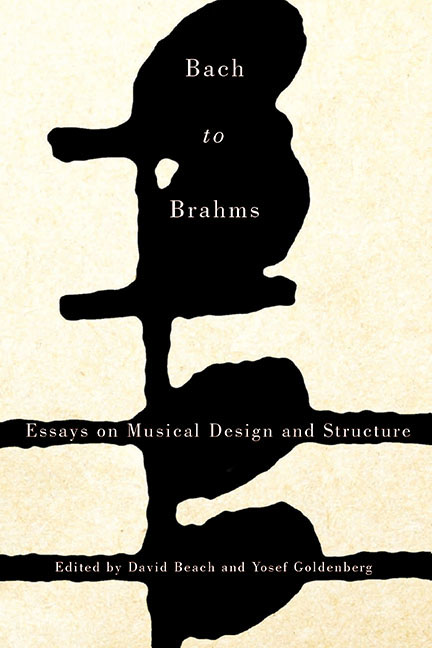Book contents
- Frontmatter
- Dedication
- Contents
- Introduction
- Part One Structure and Design
- 1 Strolling through a Haydn Divertimento with Two Heinrichs
- 2 Ritornelli or Soli: Which Did Mozart Write First in the Opening Movement of His Violin Concerto K. 207?
- 3 Outer Form, Inner Form, and Other Musical Narratives in Beethoven's Opus 14, No. 2
- 4 Temporal Poise and Oblique Dynamic in the First Movement of Beethoven's “Archduke” Trio
- Part Two Focus on Motive
- Part Three Structure and Design II
- List of Contributors
- Index
2 - Ritornelli or Soli: Which Did Mozart Write First in the Opening Movement of His Violin Concerto K. 207?
from Part One - Structure and Design
Published online by Cambridge University Press: 14 March 2018
- Frontmatter
- Dedication
- Contents
- Introduction
- Part One Structure and Design
- 1 Strolling through a Haydn Divertimento with Two Heinrichs
- 2 Ritornelli or Soli: Which Did Mozart Write First in the Opening Movement of His Violin Concerto K. 207?
- 3 Outer Form, Inner Form, and Other Musical Narratives in Beethoven's Opus 14, No. 2
- 4 Temporal Poise and Oblique Dynamic in the First Movement of Beethoven's “Archduke” Trio
- Part Two Focus on Motive
- Part Three Structure and Design II
- List of Contributors
- Index
Summary
The Emergence of the Classical Concerto from Mozart's Adaptations of Keyboard Sonatas
In his 1793 textbook, Heinrich Christoph Koch offers guidance to student composers about writing a concerto movement for soloist and orchestra. Among other things, he writes that the first solo should be written before the ritornello: “The first main period of the solo part is worked out before the ritornello is arranged as the introduction to the solo part.” This statement fits in with his belief that the ritornello sections are secondary to the solos: “The first allegro of the concerto contains three main periods performed by the soloist, which are enclosed by four subsidiary periods performed by the orchestra as ritornellos.”
In light of this, we can imagine how an aspiring composer, in his first attempt to write, say, a piano concerto, would follow Koch's instructions. In essence, he would write a piano sonata, which he then “encloses” in compact orchestral ritornelli based mainly on themes already found in the sonata. He would also integrate the orchestra into the solo sections by adding instrumental accompaniment, doublings and echoes of the solo part, orchestral interjections, and so on, in keeping with his ability and skill.
The question is whether this modus operandi was also employed by the leading composers of Classical concerto, and especially Mozart. Our first impulse might be to reject this notion out of hand: Mozart's mature concerti seem to be planned as a single unit. Several elements of the opening ritornello are absent from the solo exposition but reappear in the recapitulation; important themes not heard in the opening ritornello make their first appearance in the solo exposition; some thematic units are played exclusively by the orchestra, others exclusively by the soloist, and still others by both. All of this, and more, is evidence of the latent presence of an overall plan that is realized simultaneously in every part of the movement. From the conceptual perspective, too, Koch's suggestion that the solo sections outrank the ritornelli as the “main periods” does not seem to apply to the Mozartian concerto.
- Type
- Chapter
- Information
- Bach to BrahmsEssays on Musical Design and Structure, pp. 23 - 44Publisher: Boydell & BrewerPrint publication year: 2015



